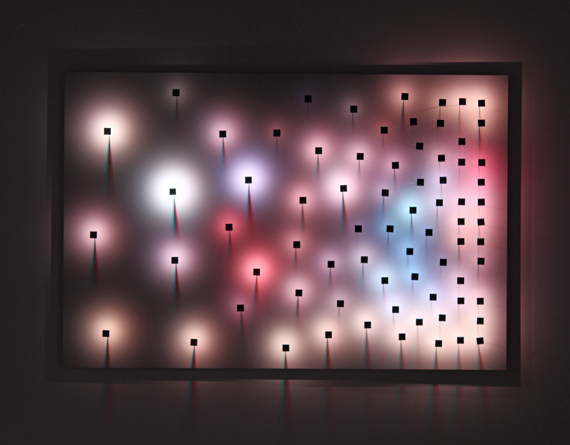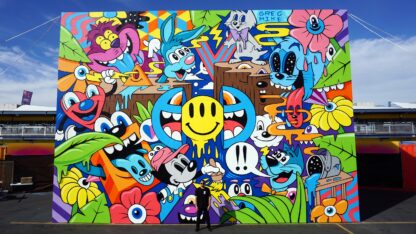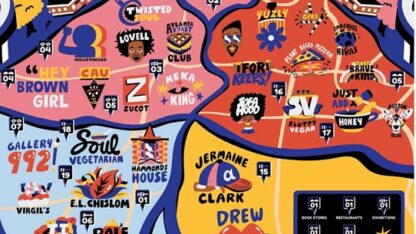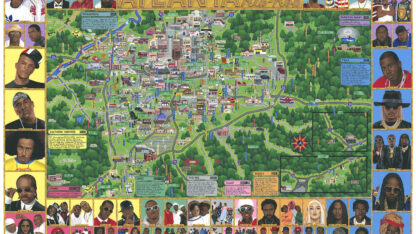Art and technology collide in 'Coded Realities' exhibit in Woodstock

Technology is such a vital part of our lives. It’s difficult to believe that the internet became publicly available just 29 years ago. A new exhibition at the Reeves House, “Coded Realities: Art + Technology,” examines how the machines we create serve as mirrors that magnify our desires and amplify our perceptions. The show features established and emerging artists who use technology to create installations and artwork. Nicole Lampl, the director and curator at the Reeves House, joined “City Lights” host Lois Reitzes via Zoom along with the prominent multidisciplinary artist Jim Campbell to talk more about the exhibition.
Interview highlights:
A Jim Campbell piece based on 2017 DC Women’s March footage:
“The work in this exhibition is a small abstract close-up of just people walking by, and one of the things that it does is, you see pink hats go by, and that’s one of the main cues to tell you what it is that you’re looking at because it’s so abstract,” Campbell said. “There’s something about low-resolution; by eliminating the details … you don’t need the faces of the people to know what’s going on and the ambiance of the environment, so it’s just a different way of looking at things in low resolution. You don’t pay attention to details because you don’t have them.”
“What happens when a work is successful, and you’re in front of it, is the analytical part of your brain, as you’re looking at it, kind of shuts off,” said Campbell. “Because you can’t tell who the person is. There are no edges to look at. You can’t even usually tell what gender they are. And so the information just kind of flows into you, bypassing the analytical parts of your brain. So I see that as more primal, more instant … kind of an essence.”
On the late featured video artist and sculptor Alan Rath:
“Alan did a number of things before other people, and the most important one … is when he started making work in the mid-’80s. Most of video art at the time was kind of self-referential, and it was very political. It was about media. It was about TV,” Campbell explained. “Whereas Al stripped all that off early on, and he said, I’m interested in sculpture, and I’m interested in using video in my sculpture.”
“For example, he would take his TV tubes out of the boxes that they were in so there was no longer a reference to Sony or Samsung or any of the other manufacturers. It wasn’t about that. It was about using these images and these CRTs as part of a sculpture. So he kind of stepped away from video art as being a political comment.”
Other highlights from “Coded Realities:”
“[Laurie Frick] did a couple of pieces that are about DNA sequencing and visualizing that. Her work is really overall about data visualization and compressing a lot of data into something more understandable and comprehensible from an overwhelming amount of information, and she’s got these really amazing pieces that serve as tracking her time, as well as tracking her sleep — so she’s using technology in order to track all of this personal information,” said Lampl.
“We’ve got Owen McAteer, who has … the first piece you encounter when you walk into this space, and it’s made out of a flip dot matrix, which is a technology used historically on bus signs and things like that, although everything’s gone digital now,” Lampl explained. “What’s so great about this piece is that it’s interactive. There’s a depth-sensing camera attached to the bottom, so when people come in, they’ll suddenly see their silhouette appear, and they can interact with it and move around, and the flip dot will reflect those movements.”
“Coded Realities: Art + Technology” is on view at the Reeves House Visual Arts Center in Woodstock, GA, through April 17. More information is available here.








